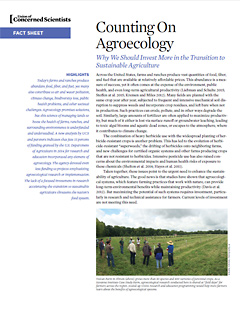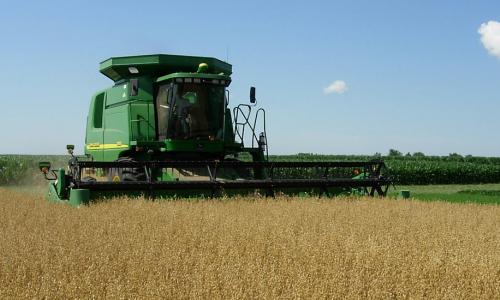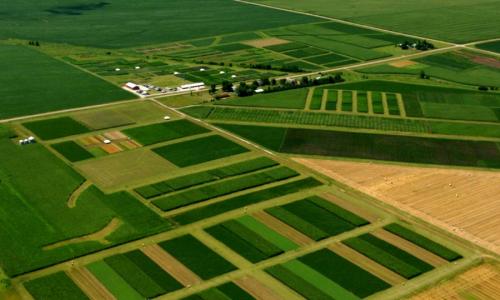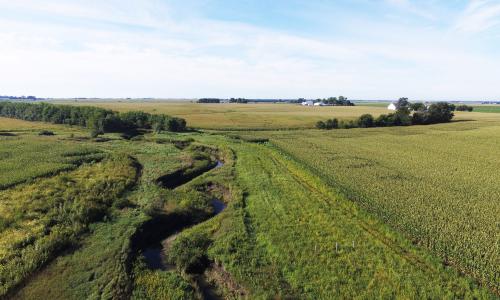Agroecological farming systems offer a science-based alternative to the industrial model that currently dominates U.S. agriculture. By adopting agroecological approaches, we can transform the way we produce our food in a more sustainable direction, with benefits for the health of farmland, farm workers, the environment and the climate.
But a 2015 analysis by UCS and partners shows that the U.S. Department of Agriculture (USDA) is missing the boat when it comes to investing in agroecological research and education. The study found that only 15 percent of external USDA grants go to projects that include agroecology, and only 4 percent to projects that could be considered transformative.
Industrial agriculture: a dead end
Agriculture in the United States is succeeding at production—but failing at sustainability. Our farms and ranches produce vast quantities of food, fiber and fuel, but this abundance comes at the expense of the environment, public health, and even long-term agricultural productivity.
Our entrenched industrial agriculture system has spawned a host of problems. Practices like monoculture (planting the same crops in the same fields year after year) and frequent tillage degrade soil health. Excess fertilizer runoff produces toxic algal blooms and aquatic dead zones. Herbicide overuse has led to an epidemic of "superweeds," and intensive pesticide use has raised concerns about environmental and human health impacts.
In short, our food production system is unsustainable.
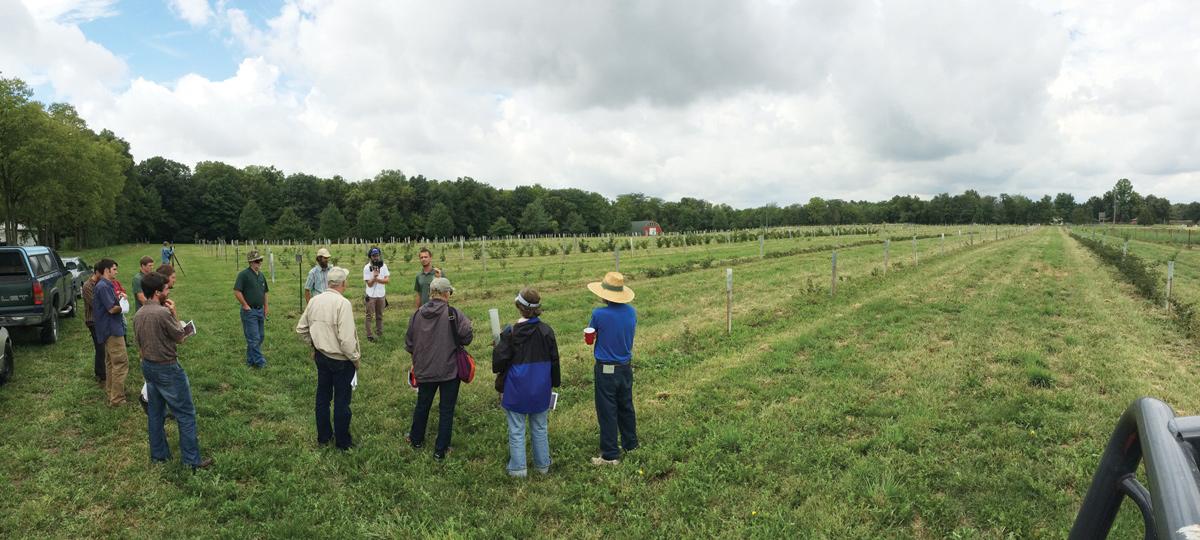
Agroecology to the rescue
The good news is that we know how to fix this. Agroecological systems, which feature farming practices that work with nature, can avoid the damaging impacts of industrial agriculture without sacrificing productivity or profitability.
Studies have confirmed that agroecological farms can succeed. But more research is needed to support implementing agroecological systems across the enormous range of crop varieties, climates, and other conditions that US farmers face. And farmers who want to adopt agroecological approaches need education and technical assistance to make the transition. Recognizing this need, a growing number of scientists have added their voices to a statement calling for increased public investment in agroecological research.
Why USDA investment is important
Providing research, education, and technical support for advances in agriculture has long been a key part of the USDA’s mission. The Smith-Lever Extension Act of 1914, which created the USDA’s agricultural extension service, described this part of the agency’s mission as “to aid in diffusing…useful and practical information on subjects relating to agriculture.”
It’s particularly important for the USDA to support innovations that serve the interests of farmers and the public, but are unlikely to attract private-sector funding. Because one of the key components of agroecology is reducing farmers’ dependence on goods and services sold by private industry (such as fertilizers and pesticides), agroecology falls squarely into this category.
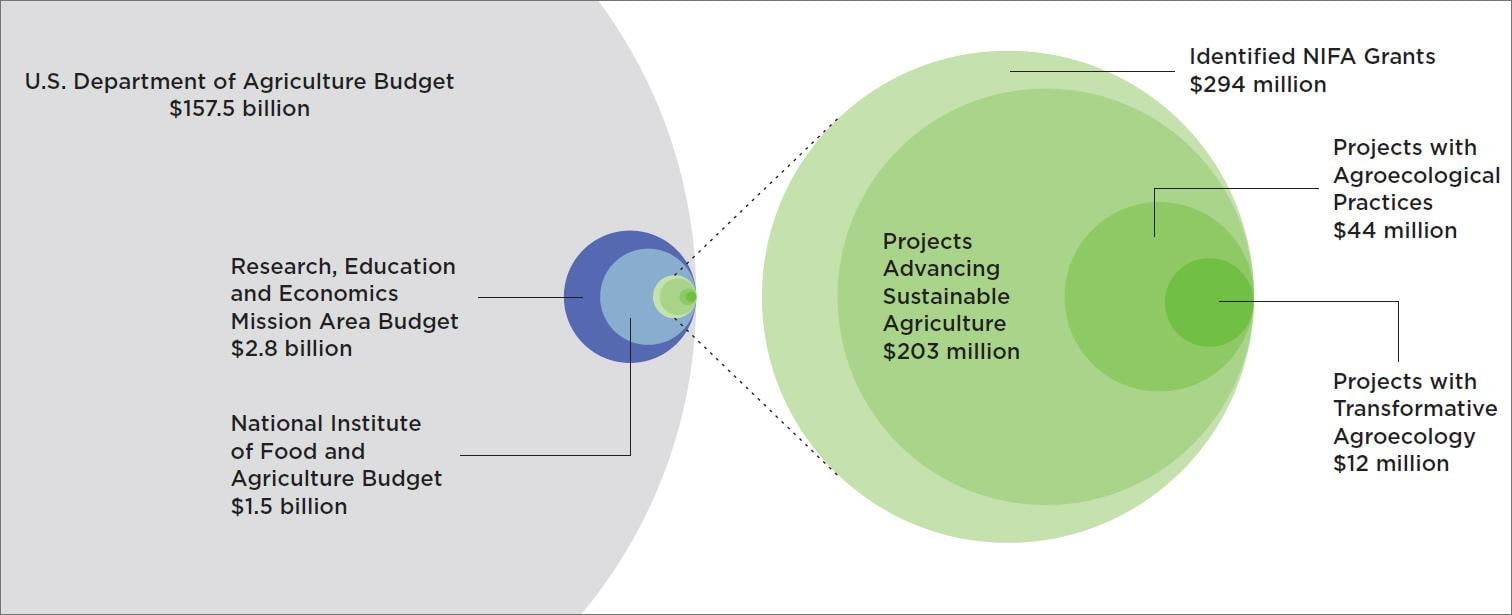
Falling far short
Unfortunately, our analysis shows that the USDA is currently doing an inadequate job of supporting agroecology research.
The study looked at projects initiated in 2014 with funding from the National Institute of Food and Agriculture (NIFA), the USDA agency that provides support for research conducted by land-grant colleges, universities, and partner organizations. We assessed these NIFA grants (totaling $294 million) to see how much support was going to sustainable agriculture in general and agroecological systems in particular.
We found that less than 15% of funding went to projects that included any element of agroecology. Even less went to projects with a greater focus on agroecology, or to potentially transformative projects that paired agroecological practices with socioeconomic innovations.
A substantial portion of the NIFA grants went to projects working to increase efficiency or replace harmful practices with better alternatives (23 percent). These projects can lead to incremental progress, but what we really need is a transformation.
Time to make agroecology a priority
Given our urgent need for profitable, ecologically sustainable farms and ranches, we need to do a better job of investing in agroecology. And USDA leadership and support is critical because the private sector largely lacks a profit incentive to invest in this area.
We recommend the following actions:
- The USDA should use its authority and budget to prioritize and scale up holistic agroecological research, extension, and education programming. Systems-based research requires significant support over several years, so consistent priorities and substantial awards are essential. The USDA should encourage projects that maximize public benefit through knowledge sharing and cooperation.
- Land-grant colleges and universities, as well as the extension service, should expand research, education, and extension programming on agroecology and sustainable food systems, and they should foster the exchange of agroecological knowledge. To enable large-scale change, programs should seek to combine agroecological practices with socioeconomic support mechanisms.
- Congress should significantly increase funding to the USDA and partner agencies for agroecological research, and it should do so through the annual budget and appropriations process. A concentration on systems-based research that brings together ecological and socioeconomic sustainability is vital.
